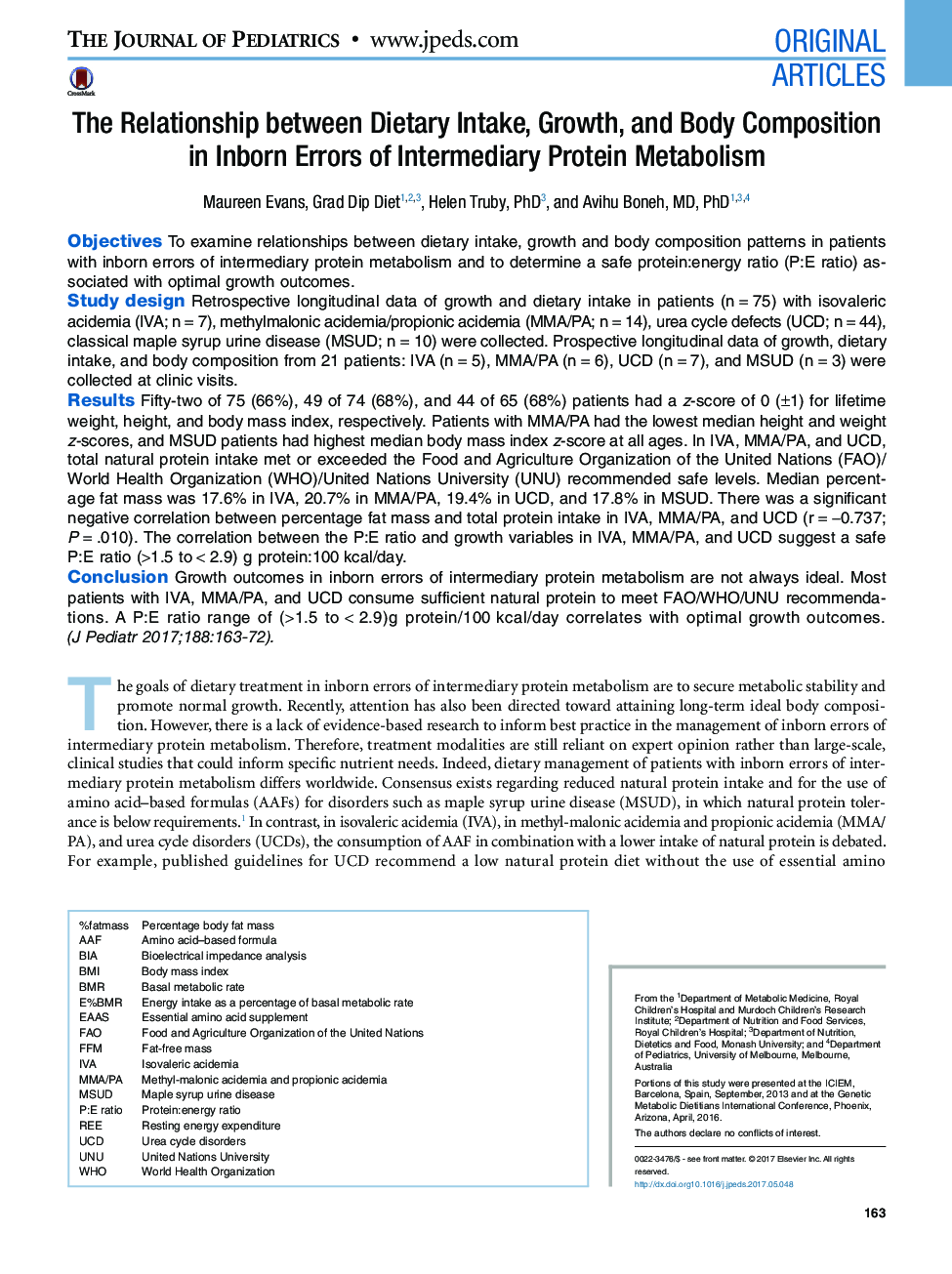| Article ID | Journal | Published Year | Pages | File Type |
|---|---|---|---|---|
| 5718966 | The Journal of Pediatrics | 2017 | 10 Pages |
ObjectivesTo examine relationships between dietary intake, growth and body composition patterns in patients with inborn errors of intermediary protein metabolism and to determine a safe protein:energy ratio (P:E ratio) associated with optimal growth outcomes.Study designRetrospective longitudinal data of growth and dietary intake in patients (nâ=â75) with isovaleric acidemia (IVA; nâ=â7), methylmalonic acidemia/propionic acidemia (MMA/PA; nâ=â14), urea cycle defects (UCD; nâ=â44), classical maple syrup urine disease (MSUD; nâ=â10) were collected. Prospective longitudinal data of growth, dietary intake, and body composition from 21 patients: IVA (nâ=â5), MMA/PA (nâ=â6), UCD (nâ=â7), and MSUD (nâ=â3) were collected at clinic visits.ResultsFifty-two of 75 (66%), 49 of 74 (68%), and 44 of 65 (68%) patients had a z-score of 0 (±1) for lifetime weight, height, and body mass index, respectively. Patients with MMA/PA had the lowest median height and weight z-scores, and MSUD patients had highest median body mass index z-score at all ages. In IVA, MMA/PA, and UCD, total natural protein intake met or exceeded the Food and Agriculture Organization of the United Nations (FAO)/World Health Organization (WHO)/United Nations University (UNU) recommended safe levels. Median percentage fat mass was 17.6% in IVA, 20.7% in MMA/PA, 19.4% in UCD, and 17.8% in MSUD. There was a significant negative correlation between percentage fat mass and total protein intake in IVA, MMA/PA, and UCD (râ=ââ0.737; Pâ=â.010). The correlation between the P:E ratio and growth variables in IVA, MMA/PA, and UCD suggest a safe P:E ratio (>1.5 toâ<â2.9) g protein:100âkcal/day.ConclusionGrowth outcomes in inborn errors of intermediary protein metabolism are not always ideal. Most patients with IVA, MMA/PA, and UCD consume sufficient natural protein to meet FAO/WHO/UNU recommendations. A P:E ratio range of (>1.5 toâ<â2.9)g protein/100âkcal/day correlates with optimal growth outcomes.
